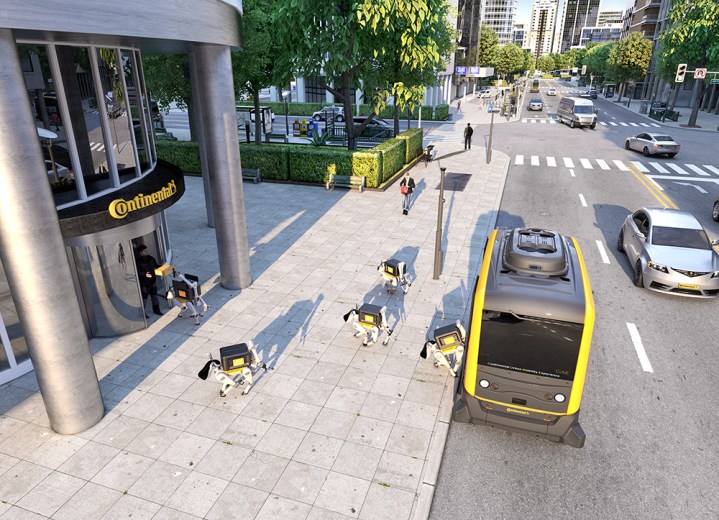
As we all order more and more stuff from Amazon and other online retailers, delivery of goods becomes an increasingly pressing concern. A solution is being proposed by Continental at this year’s CES 2019, where the company will be exhibiting its system of driverless vehicles and delivery robots.
More CES 2019 coverage
- Audi’s VR tech turns the car into a spaceship on wheels
- Bell shows a flying taxi prototype
- Nissan’s ‘invisible-to-visible’ tech makes driving similar to a video game
A challenge for delivery robot concepts is the need for the bots to travel long distances between drop-off locations, such as moving across an area of several city blocks. Then, of course, the robots need to be small and maneuverable enough to actually make a delivery to a home or place of business. Continental’s approach to this challenge is to break it down into two components: One driverless vehicle about the size of a small car, and a number of smaller delivery robots. The robots can be transported inside the vehicle and then deployed to actually make the delivery.
Continental is working on the driverless vehicle, called the the Continental Urban Mobility Experience (Cube), which it will customize to meet the needs of robot manufacturers. The Cube should be able to navigate busy urban environments in an efficient way, avoiding obstacles and offering a solution to the “last mile” problem in logistics. The approach of using a deployment vehicle for autonomous robots is referred to as a robotaxi or pod, and promises to offer a more sustainable way to move goods around.
The idea of combining driverless vehicles and delivery robots is a natural one, according to Ralph Lauxmann, head of Systems & Technology, Chassis & Safety division at Continental. “Both are electrified, both are autonomous and, in principle, both can be based on the same scalable technology portfolio,” he said in a statement. “These synergies create an exciting potential for holistic delivery concepts using similar solutions for different platforms. Beyond this technology foundation, it’s reasonable to expect a whole value chain to develop in this area.”
As driverless vehicles become commonplace, there will be many uses for them in addition to deliveries. For example, during busy rush hours, the vehicles could be used as taxis for commuters, then outside of these busy times, the same vehicles could be used for deliveries. Having the vehicles in operation almost 24/7 would make for much more efficient use of resources and could eventually lower or eliminate the need for privately owned cars.
If you’re at CES and want to learn more about the robotaxis, you can visit the Continental booth from January 8 to 11 at North Hall Booth No. 7519.



